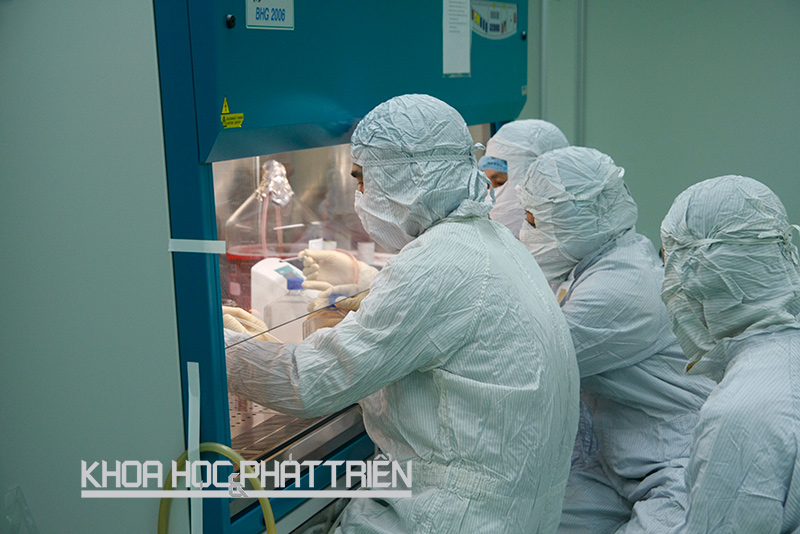
Currently, Vietnam can only produce single vaccines with medium-level technology, while products can meet just 50 percent of demand.
 |
Currently, Vietnam can only produce single vaccines with medium-level technology, while products can meet just 50 percent of demand.
The establishment of a vaccine technology map assesses the current status, technological capacity as well as development trends, thus helping accelerate the production of ‘made-in-Vietnam’ vaccines.
Assessing the technological capacity and the need for technological innovation in the production of vaccines for humans is one of the national science and technology programs being implemented at the Ministry of Science & Technology (MST).
Researchers have developed a technology map with a roadmap for the vaccine industry in Vietnam, which serves as a basis for research and development of high quality, safe products.
Vabiotech, the company which carries out the scientific research project, suggested a model of technology tree comprising four stratums.
The first-stratum technology includes seven technology branches which lay a foundation for the second stratum. The seven branches would ramify into 24 detailed technologies in the third stratum. In the fourth stratum, the 24 technologies will be divided into 43 component technologies.
Each technology of the fourth stratum can be used to produce a kind of vaccine.
Researchers pointed out that Vietnam masters technologies of the two first stratums just as in developed countries do, but it is still weak at technologies of the third stratum – vaccine type creation, viral replication on bioreactor or antigenic combination.
This causes difficulties in developing new vaccines, 5-in-1 or 6-in-1 vaccines.
The vaccine technology map demonstrates the technologies in use and the real capacity to produce vaccine sequences.
The map will also provide information to questions: What direction does Vietnam need to go and what technology should be invested in to join the group of the world’s leading countries in vaccine production?
The team combined the technology map with a list of products in the national expanded vaccination program. They also set specific targets for vaccine development: making 6 in 1 (DTaP-vGB-IPV-Hib) and 5 in 1 (DTaP-vGB-Hib) finished products meeting the standards of the World Health Organization; making vaccines for Japanese encephalitis on cell culture; expanding the Rota vaccine production scale to meet domestic demand and for export; transferring technology and commercializing rubella vaccines; commercializing of influenza vaccine (H5N1) vaccines; building and improving the technological process of HPV vaccine production; and approaching the production of pneumococcal vaccines.
In order to develop technology for the production of 6 in 1 vaccines, it is necessary to carry out research projects on development of inactivated poliomyelitis vaccines, conjugated Hib vaccines, DTaP, 6 in 1 vaccines (DTaPHepB-Hib-IPV); and develop a 6-in-1 vaccine production technology, as well as carry out clinical trials on volunteers and enter industrial scale production.
(Source: VNN)




